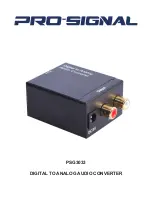
There will be two distinct clicks of relays as it goes through the self-check sequence. These
relay clicks are the Lite-Minder turning on the output relays to check if any voltages are present
and then tickling the output with a small voltage to see if short circuits or overloads are
present.
The faults that are checked for during start-up mode are:
BACKFEED
– This is when AC voltages are present at any of the outputs. If there are AC
voltages present at any of the outputs, it means that there is a mis-wire and the utility AC
power is being back-fed into the inverter.
ROTATION
– This fault would occur if the module was replaced and re-connected improperly.
The Phase Rotation diagnostic energizes the inverter and looks for output voltages out of
regulation.
BATT LOW
– This fault would occur if the DC voltage at the power PCB is too low. Possibilities
for this fault to occur are blown DC fuse on the power PCB, Battery wiring incorrect or battery
voltages too low to start the system up without a failure.
OVERLOAD
– This fault would occur if the connected load exceeds that of the rating of the
Lite-Minder. This check is performed by tickling the output to a low voltage for one cycle and
looking for overcurrent faults. This diagnostic features connects all the outputs such as the
Normally Off and the Switched Output.
MISWIRE
– This fault would occur if the AC input voltage is not within specification. For
example if the unit is a 277V model and only 120V was connected, a MISWIRE fault would
occur. Conversely if a 120V model had 277 VAC connected, a MISWIRE fault would occur.
Also if no AC voltage was applied to the input, a MISWIRE would occur.
After all the Start-Up diagnostics are performed, the Lite-Minder is OK to proceed to the
Battery Charging mode.
9.2
Battery Charging Mode
The Battery Charging mode is where the system will remain for 99.9+ percent of its life. In
this mode, AC power is being passed through to the units output and subsequently its loads
and the batteries are keeping a float charge. The charger is floating at 2.27 Volts per Cell (VPC)
and is temperature compensated to 4mV per deg. C (per cell), centered at 25 degrees C.
For higher temperatures, the float voltage would go down and for lower temperatures, the float
voltage would go up.
The Lite-Minder nominal DC battery voltage is 24 VDC. The float voltage is 27.2 VDC (2.27
VPC) and the LVD voltage is 20.5 VDC (1.67 VPC).
Float voltage varies with temperature, LVD voltage is fixed.
Pg. 20





































